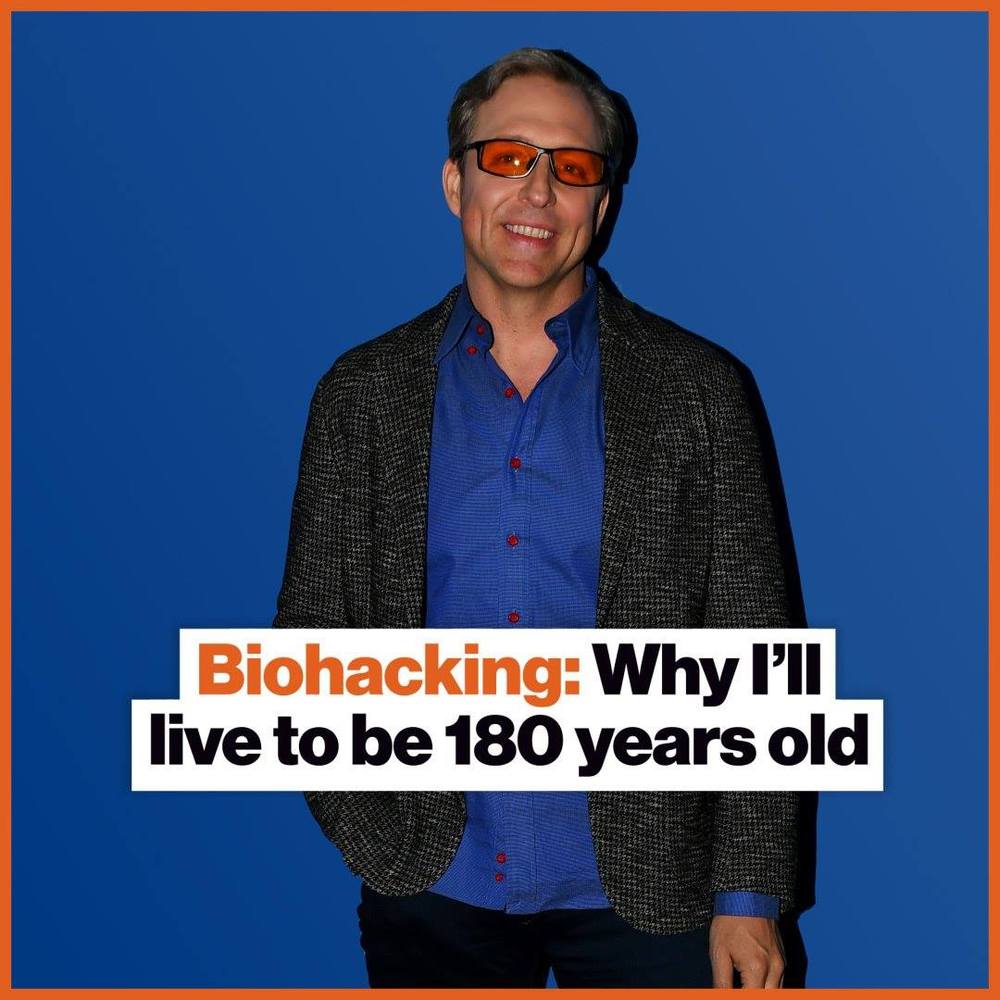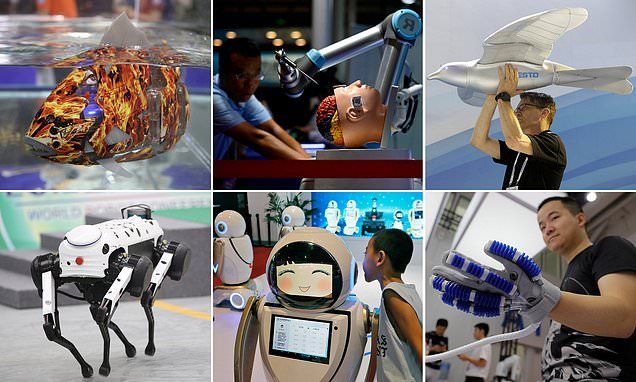Aug 20, 2019
Biohacking: Why I’ll live to be 180 years old
Posted by Paul Battista in categories: bioengineering, life extension
From computer hacking to biohacking, Dave Asprey has embarked on a quest to reverse the aging process.

From computer hacking to biohacking, Dave Asprey has embarked on a quest to reverse the aging process.
In the 2015 movie “Chappie”, which is set in the near future, automated robots comprise a mechanised police force. An encounter between two rival criminal gangs severely damages the law enforcing robot (Agent 22). His creator Deon recommends dismantling and recycling the damaged police droids. However, criminals kidnap Deon and force him to upload human consciousness into the damaged robot to train it to rob banks. Chappie becomes the first robot with the human mind who can think and feel like a human. Later, in the movie when his creator Deon is dying, it’s Chappie’s turn to upload Deon’s consciousness into a spare robot through a neural helmet. Similarly, in the “Avatar” a 2009 Hollywood science fiction, a character in the film by name Grace connects with Eiwa, the collective consciousness of the planet and transfers her mind to her Avatar body, while another character Jake transfers his mind to his Avatar body rendering his human body lifeless.
Mind uploading is a process by which we relocate the mind, an assemblage of memories, personality, and attributes of a specific individual, from its original biological brain to an artificial computational substrate. Mind uploading is a central conceptual feature of many science fiction novels and films. For instance, Hanson’s book titled “The Age of Em: Work, Love and Life when Robots Rule the Earth” is a 2016 nonfiction book which explores the implications of a future world when researchers have learned to copy humans onto computers, creating “ems,” or emulated people, who quickly come to outnumber the real ones.
We (TIRIAS Research) recently had an opportunity to evaluate the latest Jetson platform from Nvidia. At just 45mm x 70mm the Jetson Nano is the smallest Artificial Intelligence (AI) platform form factor Nvidia has produced to date. The Jetson Nano is powered by the Tegra X1 SoC, which features quad 1.43 GHz Cortex-A57 CPU cores and the 128-core Maxwell GPU. The Jetson Nano also uses the same Jetpack Software Development Kit (SDK) as the other Jetson platforms, the TX2 and AGX Xavier, allowing for cross platform development. For only $99, plus a little extra for accessories, the Jetson Nano is an amazing platform.
In addition to the Tegra X1 SoC, the Nano developer kit comes configured with 4GB of LPDDR4 memory and plenty on I/O options, including a MIPI CSI connector, four USB 3.0 Type-A ports, one USB 2.0 Micro-B, one gigabit ethernet port, and 40 GPIO pins. The Nano is capable of driving dual displays through single DisplayPort and HDMI ports, it has an microSD card slot for storage, and a somewhat hidden M.2 Key E connection for expansion modules/daughter cards for optional functions like wireless connectivity. The Jetson Nano developer kit comes with a sizable heatsink for passive cooling, but has holes drilled for add-on fans. For our evaluation, we used a Noctua NF-A4x20 5V PWM fan and a Raspberry Pi MIPI Camera Module v2 from RS Components and Allied Electronics.
For development software, the Nano runs an Ubuntu Linux OS and uses the Jetpack SDK, which supports Nvidia’s CUDA developer environment, as well as other common AI frameworks, such as TensorRT, VisionWorks, and OpenCV.

Machines on display at World Robot Conference in China can fly, swim and even do brain surgery…
Continue reading “Robots at conference in China can fly, swim and even do brain surgery” »
UK company raises $100m to find fountain of ‘eternal youth’ by cheating death and REVERSING ageing with new technology…
The firm announced a total investment of $10 million from its founders and a further $10 million each from core investors.

Scientists from the International Atomic Energy Agency (IAEA) in Vienna, Austria, released footage of the effect at work in a research reactor…
Experts from the International Atomic Energy Agency in Vienna, Austria, released footage of the effect — a visual equivalent to the ‘sonic boom’ — at work.
Continue reading “Footage reveals the moment a nuclear reactor pulses and glows blue” »
A team of scientists from Ohio University, Argonne National Laboratory, Universitié de Toulouse in France and Nara Institute of Science and Technology in Japan led by Ohio Professor of Physics Saw-Wai Hla and Prof. Gwenael Rapenne from Toulouse developed a molecular propeller that enables unidirectional rotations on a material surface when energized.
In nature, molecule propellers are vital in many biological applications ranging from the swimming bacteria to intracellular transport, but synthetic molecular propellers, like what has been developed, are able to operate in harsher environments and under a precise control. This new development is a multiple component molecular propeller specially designed to operate on solid surfaces. This tiny propeller is composed of three components; a ratchet shape molecular gear as a base, a tri-blade propeller, and a ruthenium atom acting as an atomic ball bearing that connects the two. The size of the propeller is only about 2 nanometers (nm) wide and 1 nm tall.
“What is special about our propeller is its multi-component design that becomes chiral on the gold crystal surface, i.e. it forms right- or left-tilted gears,” said Hla. “This chirality dictates the rotational direction when energized.”
It seems that billionaire biotech investor Jim Mellon is the flavor of the month as he continues the drive to create a rejuvenation biotech industry. Jim and his colleagues at Juvenescence have announced that they have secured another $100M for the company, and it will be used to invest and support the growth of promising biotech companies working in this field.
Juvenescence has a varied investment portfolio of companies that range in potential usefulness, depending on your point of view, and they mostly favor the more traditional small molecule drug approach. There are a few companies that are of particular interest.
Modern machine learning applications need to process a humongous amount of data and generate multiple features. Python’s datatable module was created to address this issue. It is a toolkit for performing big data (up to 100GB) operations on a single-node machine, at the maximum possible speed.
By his late 20s, Moe had attained the young adult dream. A technology job paid for his studio apartment just blocks from the beach in Santa Barbara, California. Leisure time was crowded with close friends and hobbies, such as playing the guitar. He had even earned his pilot’s license. “There was nothing I could have complained about,” he says.
Yet Moe soon began a slide he couldn’t control. Insomnia struck, along with panic attacks. As the mild depression he’d experienced since childhood deepened, Moe’s life collapsed. He lost his job, abandoned his interests, and withdrew from his friends. “I lost the emotions that made me feel human,” Moe says. (He asked that this story not use his full name.)
Although many people with depression respond well to treatment, Moe wasn’t one of them. Now 37, he has tried antidepressant drugs and cycled through years of therapy. Moe has never attempted suicide, but he falls into a high-risk group: Though most people with depression don’t die by suicide, about 30% of those who don’t respond to multiple antidepressant drugs or therapy make at least one attempt. Moe was desperate for relief and fearful for his future. So when he heard about a clinical trial testing a new approach to treating depression at Stanford University in Palo Alto, California, near his home, he signed up.
